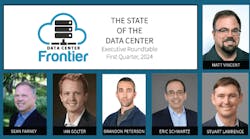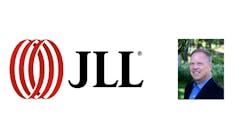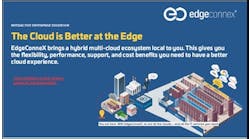Will the recovery in enterprise IT spending continue into 2022? That’s today’s topic for the DCF Data Center Executive Roundtable, a quarterly feature showcasing the insights of thought leaders on the state of the data center industry.
Our panelists include Heather Dooley of Infrastructure Masons, Data Aire’s Eric Jensen, Kevin Facinelli of Nortek Data Center Cooling, Aligned’s Tim Shaheen, Phillip Marangella of EdgeConneX, and Tim Mirick from Sabey Data Centers. The conversation is moderated by Rich Miller, the founder and editor of Data Center Frontier. Here’s today’s discussion:
Data Center Frontier: Enterprise IT spending appears to be rebounding after subdued spending in 2020. What are the most important trends you’re seeing in enterprise demand, and how might they impact the data center business in 2022?
TIM MIRICK, Sabey Data Centers
Tim Mirick, Sabey: As the dust settles, the post-pandemic business landscape is finally coming into focus for most enterprises. Unsurprisingly, most are doubling down on their commitment to hybrid IT initiatives.
As significant hybrid IT projects drive on-premise data centers to colocation and cloud, data center developers will be directly affected. First, additional enterprise demand will help smooth pipelines, mitigating the risks of courting only large hyperscale opportunities.
Additionally, as enterprises move workloads between colocation and cloud, providers will find themselves in the position of needing to be flexible in both design and contracts.
PHILLIP MARANGELLA, EdgeConneX
Phillip Marangella: With digital transformation initiatives accelerated during COVID and cloud migration increasing, enterprises want the flexibility of both hybrid cloud and multi-cloud solutions. Depending on the application and the workload, the type of cloud and type of provider might vary. They want a more proximate and secure cloud as well and they are leveraging third-party expertise to help architect and integrate these solutions.
All of this is driving the growth of hybrid, multi-cloud solutions at the Edge with an ecosystem of providers integrated by MSPs for enterprises. It’s a win-win for enterprises and service providers, and data center providers are the key interconnection point for both in that scenario.
“It’s a win-win for enterprises and service providers, and data center providers are the key interconnection point.”
Phillip Marangella, EdgeConneX
RICK CRUTCHLEY of Iron Mountain.
Rick Crutchley: Some enterprises are still in digital transformation and continue to make great strides in moving their data from analog to digital. Many are leveraging technologies from AI to machine learning as they continue to evolve to meet the needs of the end user.
As 5G continues to strengthen and have availability, enterprises are working to get their data to the end user in the most effective and cost-effective way.
For data center providers, these trends will continue to drive demand. There will be a continued focus on edge, and where that edge sits will be a key driver, combined with the core data center and the cloud.
TIM SHAHEEN, Aligned
Tim Shaheen: COVID-19 has certainly accelerated digitization, prompting many businesses to reap the many benefits of public cloud. What we are seeing on the enterprise side now is that some of those companies operating at scale are reassessing their “all-in” cloud strategies and considering a more hybrid approach to IT operations – what the industry has dubbed “cloud repatriation.”
Whether that shift is driven by cost, security, availability, or in-house skills, we see a potential impact to the data center business as these companies begin to bring back workloads from public clouds into their own controlled resources.
Strategically located data centers such as Aligned can offer colocation or build to suit options that can provide that added level of control without negatively impacting latency and while still providing access to public and private clouds for select applications. This option may also be able to offer more predictable IT costs (even at scale), while addressing growing density. Both options offer many advantages; their selection will come down to specific business needs.
HEATHER DOOLEY, Infrastructure Masons and HDCManagement.
Heather Dooley, Infrastructure Masons: As the world continues to struggle with the pandemic, companies are predicted to increase IT spending not only to digitize more of their business, but also manage a distributed workforce and automate tasks.
The impact to the data center business could mean more distributed allocation of capacity to support Enterprise customers’ increased expectations.
Those expectations will put more pressure on edge data center capacity and networks to support them.
ERIC JENSEN, Data Aire
Eric Jensen, Data Aire: There is definitely a renewed focus on enterprise infrastructure as the pandemic stress has tested architectures. Now, enterprises are responding with refreshes to aged infrastructure. This is changing the densities of these spaces as some of the newer architectures are either moving on-premises or being duplicated on-premises.
Another driver is the digital infrastructure to support the enterprise IT. The physical infrastructure must keep pace, leading to upgrades to modern communications needs with the facility BMS.
KEVIN FACINELLI, Nortek Data Center Cooling
Kevin Facinelli: We’re seeing slower growth in enterprise IT, versus the quickly expanding growth for hyperscale and large colocation data centers. There’s no doubt digitization is continuing to skyrocket.
Therefore, those companies running enterprise IT may find that more data hall space, servers and cooling equipment are many times better served by moving IT operations to colocation facilities.
NEXT: The DCF Roundtable looks ahead at the key themes in data center cooling for 2022.
Keep pace with the fact-moving world of data centers and cloud computing by following us on Twitter and Facebook, connecting with DCF on LinkedIn, and signing up for our weekly newspaper using the form below:







